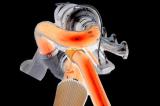- Replies 21
- Views 9.2k
- Created
- Last Reply
Top Posters In This Topic
-
 JOHNFAK 9 posts
JOHNFAK 9 posts -
 Mopar1973Man 6 posts
Mopar1973Man 6 posts -
 MnTom 4 posts
MnTom 4 posts -
 flagmanruss 1 post
flagmanruss 1 post


Not sure yet there's so much oil and hard to track down exact source even after cleaning 3x. Im starting to lean to the the oil leak is comming out of one of the two rear breathers due to excessive crankpressure (higher HP truck with ppump) . However I'm not sure what to do about it. Already have the 2 breathers. http://blogs.dieselpowermag.com/6817455/whats-new/cummins-vs-crank-case-pressure/ I've heard that a vacuum leak or turbo seal leak can cause that. Doubt its turbo as its new ...... Any ideas of input into this one. How to test vacuum leak/drawdown ...... and what do do about reducing oil leak. There is 0 blowby from the front oil collector at front, 0 blowby from the oil fill cap and I cant see any blowby at the source of the leak (tappet cover vents) whilst idle. Dont know if thats a clue or not ...... but engine seems real strong and healthy.